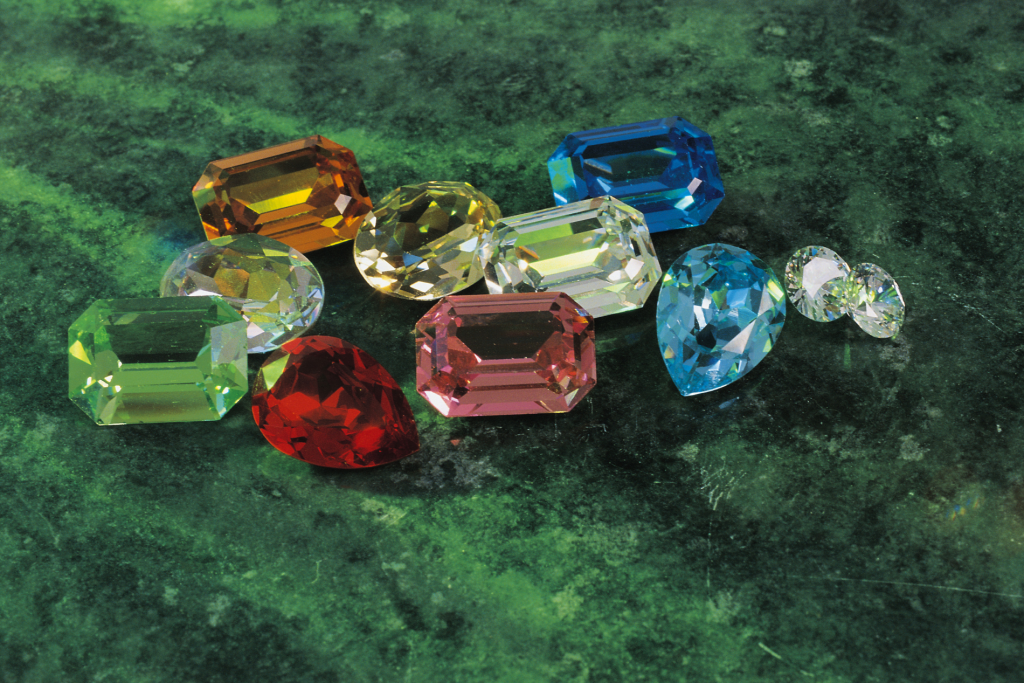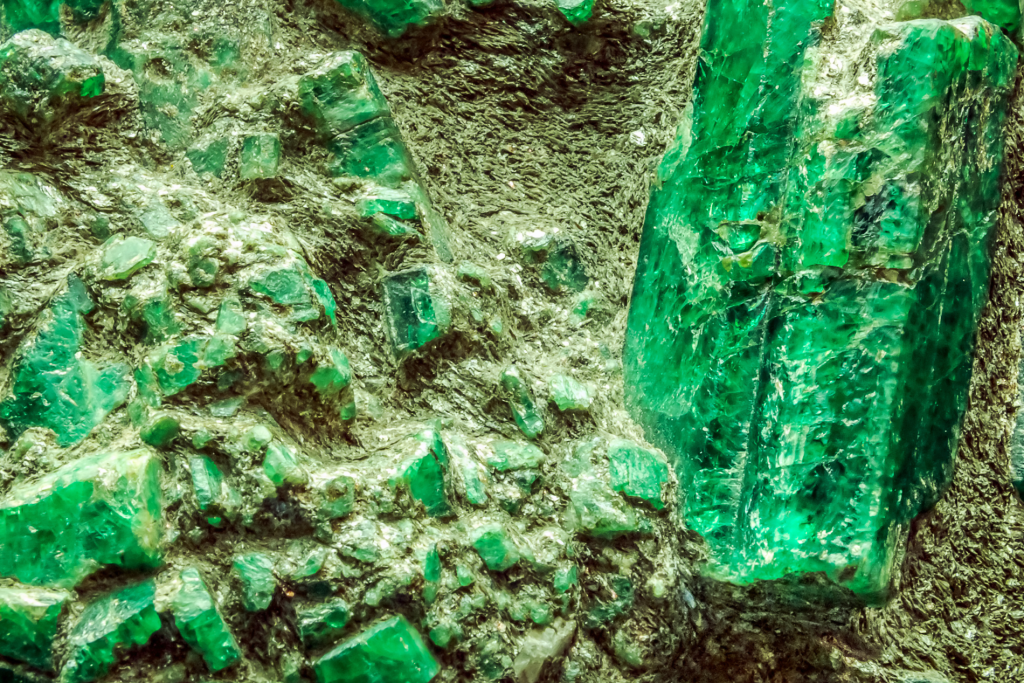Choosing the perfect gemstone is both an art and a science, requiring a keen eye and knowledge of the 4 Cs: Color, Clarity, Cut, and Carat. Each of these factors plays a crucial role in determining the beauty and value of a gemstone. This guide will help you navigate these elements, empowering you to select a gemstone that is not only valuable but also captivating.
1. Color: The Soul of a Gemstone
The color of a gemstone is often its most defining characteristic. It is evaluated based on three key components: hue, tone, and saturation.
- Hue: This refers to the primary color of the gemstone. Pure and vibrant hues, such as the rich blue of a sapphire or the fiery red of a ruby, are the most desirable.
- Tone: The lightness or darkness of a gemstone’s color is referred to as tone. The ideal gemstone will have a balanced tone—not too light, not too dark, but just right.
- Saturation: This is the intensity of the color. Gemstones with vivid and evenly distributed colors are the most valuable, while those with muted or uneven saturation are generally less desirable.
When evaluating a gemstone, ensure the color is vibrant and consistent, as this is a major factor in its overall appeal.
2. Clarity: A Gem’s Inner World
Clarity refers to the presence of imperfections, known as inclusions (internal flaws) and blemishes (surface flaws). While inclusions are common in some stones, like emeralds, others, such as diamonds, are valued more highly when they exhibit fewer inclusions.
- Gemstones with fewer visible inclusions are rarer and generally more valuable.
- Some inclusions may add character to certain stones, enhancing their uniqueness rather than diminishing their value, as is often the case with emeralds.
Always inspect a gemstone’s clarity to ensure it meets your standards, balancing rarity with beauty.
3. Cut: The Sparkle Factor
The cut of a gemstone is not just about its shape but also about how well the stone has been faceted. A well-cut gemstone will reflect light in a way that maximizes its brilliance and fire.
- Symmetry and proportion are essential for a well-cut gemstone. These factors determine how light travels through the gem and is reflected back to the eye.
- Common cuts include round, oval, princess, and emerald, with each one affecting the stone’s overall appearance and sparkle.
When selecting a gemstone, ensure it has been expertly cut to bring out its best qualities.
4. Carat: Weight vs. Impact
Carat weight measures the size of the gemstone, with larger stones generally being rarer and more valuable. However, bigger isn’t always better—quality should always take precedence over size.
- Two gemstones of the same carat weight can look different in size depending on their density. For instance, a sapphire might appear smaller than a diamond of the same weight.
- Balance the carat weight with the other 3 Cs to ensure you’re getting a gemstone that excels in every aspect, not just size.
Achieving the Perfect Balance
Mastering the art of gemstone selection means balancing the 4 Cs—color, clarity, cut, and carat. Each factor contributes to the overall beauty, rarity, and value of a gemstone. By understanding these criteria, you can make informed decisions and invest in a gemstone that not only reflects your style but also holds lasting value.
Whether for personal adornment, investment, or gifting, choosing a gemstone with the right combination of these factors ensures you have a timeless piece that will be cherished for years to come.




